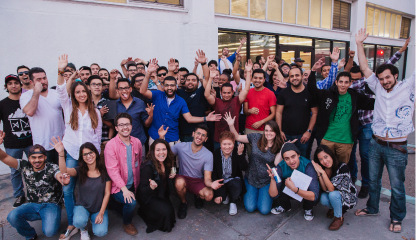How Design-Minded Students Aren’t Set Up for Success
There are many debates surrounding the public school system today with Common Core, standardized tests, attendance policies, and other regulations. Many design-minded students have trouble thriving in high school, and that trouble leads to issues getting into traditional 4-year colleges and universities. This leaves parents questioning why their child is not getting good grades, even though they are smart, and why they aren’t engaged with their schoolwork.
The truth is, education is not one-size fits all. This aspect of the education system affects many students who find themselves uninspired by the standard curriculum. Creative students that are often inhibited by repetitive and routine coursework regularly find themselves feeling bored and misunderstood by their teachers.
Designers specifically, have a unique set of characteristics that make them great at what they do. At NewSchool of Architecture & Design we’ve found that some of our most talented and ambitious students are the same ones who struggled to get the grades and stay motivated in high school. In this article, we’re going to look at several of the key characteristics and traits of designers, that famed product designer Will Gibbons identified, to get a better idea of which ones help or hinder students within the traditional education system.
Observation
With exception to science labs, observation is the biggest thing lacking from the traditional education system. Students aren’t given the opportunity to go out and observe the world around them to learn how it works. Instead, they are handed textbooks and kept indoors to listen to lectures based on those textbooks. The ability to observe is lost.
Listening
Listening is a great skill for students in the traditional education system, considering the number of hours of lectures they must attend per day. Of course, those with a creative mind tend to hear more than the average student. They may not take information as literally as they are presented, but rather look for deeper meanings and interpretations. Sometimes, this can result in going the extra mile in assignments, but other times, it can result in losing points for not following directions.
Desire
One of the desires of a designer is to improve upon what already exists. To take the details that clients give them and go above and beyond to create the perfect design. In school, this can translate to having the most creative response to an assignment, or again, the inability to follow rigid directions.
Context
Designers love to understand the context in a situation to do their best work. Sometimes, lessons in school do not make sense, even for those who can stretch their imagination. You’re rarely given the context to solve a problem – you’re given the problem and expected to find a solution given the process the teacher has taught, but you are rarely given the opportunity to discover the process that works best for you.
Solutions
In many basic subjects taught in schools, the goal of a lesson is not to find the solution to a problem. The goal is to memorize facts and figures and regurgitate them once it is testing time. Designers like the challenge of finding unique solutions to their client’s problems. This is why designers may do well in theoretical courses, but not others. It’s also why A, B, C, all of the above, or none of the above, just doesn’t work for students that are used to thinking outside of the box.
Communication
In school, you are taught to raise your hand and speak when called upon. Great communicators do not always communicate in one specific manner. For a designer, the best way to articulate his or her answer may not be to speak it, but to sketch it out or to use a model. Teachers would consider those that cannot answer the question verbally or in paragraph form as not knowing the answer, which would ultimately affect the student’s grade.
Unbound
Creative minds like to go outside of the normal boundaries in order to come up with the best designs. In most curriculums, you are restricted to specific subjects. Within those subjects, you are restricted to specific textbooks. Within those textbooks, you must agree with the information presented to you. These restrictions can inhibit student’s minds, thus making them uninterested by their schoolwork.
While traditional education systems fail to nurture the above characteristics and the many others that design-minded students possess, there are schools that not only understand, but also cater to these traits. Look for schools that put less emphasis on standardized test scores and more on student’s portfolios and interests. These schools can help students build upon their creative skill set and push them to turn their passion into lifelong career.
At NewSchool of Architecture & Design we strive to provide students with a creative and innovative learning environment that caters to their strengths and gives them the education they deserve. Our students are innovative designers who are passionate about pursuing a career in the fields of Design, Architecture and Digital Arts. We help students push their creative boundaries while giving them the tools they need to grow as a designer. Contact us today if you are interested in learning how to become a graphic designer, architect, or interior designer. We are more than happy to guide you towards the career path that is right for you and your skillset.









 619-684-8800
619-684-8800

